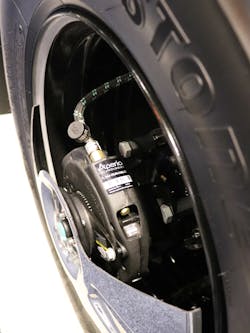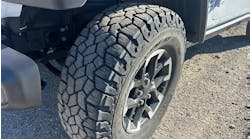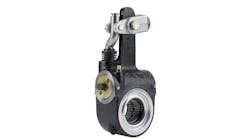Aperia launches Halo Connect 2.0 tire management platform
ORLANDO, Florida—Aperia Technologies Inc. announced the launch of Halo Connect 2.0, the latest evolution in the company’s comprehensive tire management platform, which the company said “incorporates features to prevent tire health issues from ever occurring.” The solution was demonstrated at the American Trucking Associations’ Technology & Maintenance Council 2022 Annual Meeting & Transportation Technology Exhibition in Orlando, Florida.
Aperia calls Halo Connect, which debuted in 2019, “a cradle-to-grave connected tire management platform that allows fleets to virtually eliminate unplanned tire-related downtime, reduce tire costs per mile, and engender driver confidence by pairing machine learning with active inflation.”
Halo Connect pairs with the Aperia’s Halo Tire Inflator, a device mounted to tractor and trailer wheels to provide automatic inflation when pressure decreases. The platform is compatible with all vehicle makes and models, and is available through major OEMs, a network of partners, and directly from Aperia. Through the Halo Connect Plan, Halo Connect 2.0 can be purchased as an asset or as a subscription service.
“Halo Connect now couples deep historical tire health insights with fleet-specific inputs to deliver transformative tire management solutions customized to each client,” said Josh Carter, CEO of Aperia.
He explained Halo Connect 2.0’s analytics engine “leapfrogs” other tire pressure monitoring systems, which provide threshold-based alerting.
As the company described: "If a fleet’s target cold inflation pressure (CIP) is 100 psi, the system typically alerts when tires fall 20% below target pressure. Because TPMS systems do not consider context they often yield substantial false positives and data overload.”
Halo Connect 2.0 can leverage the data revealed from 50 billion miles of real-world fleet tire data, and the engine’s machine learning characterizes the various interrelated and competing variables that affect and inform tire-related maintenance and strategic decisions.
Aperia said this “effectively [enables] fleets to shift from flying blind with a reactive tire service model to confidently executing a proactive service model that optimizes uptime and tire maintenance cost.”
Previously, an Aperia study found using Halo Connect can reduce the total number of alerts requiring attention by about 75%. Per truck, this equates to 3.4 alerts annually versus 16.5 alerts via a basic TPMS.
“By considering the business and operational context necessary to deliver actionable alerting, Halo Connect enables fleets to get every cent they paid for out of their tires and tire technology investments,” Carter concluded.





